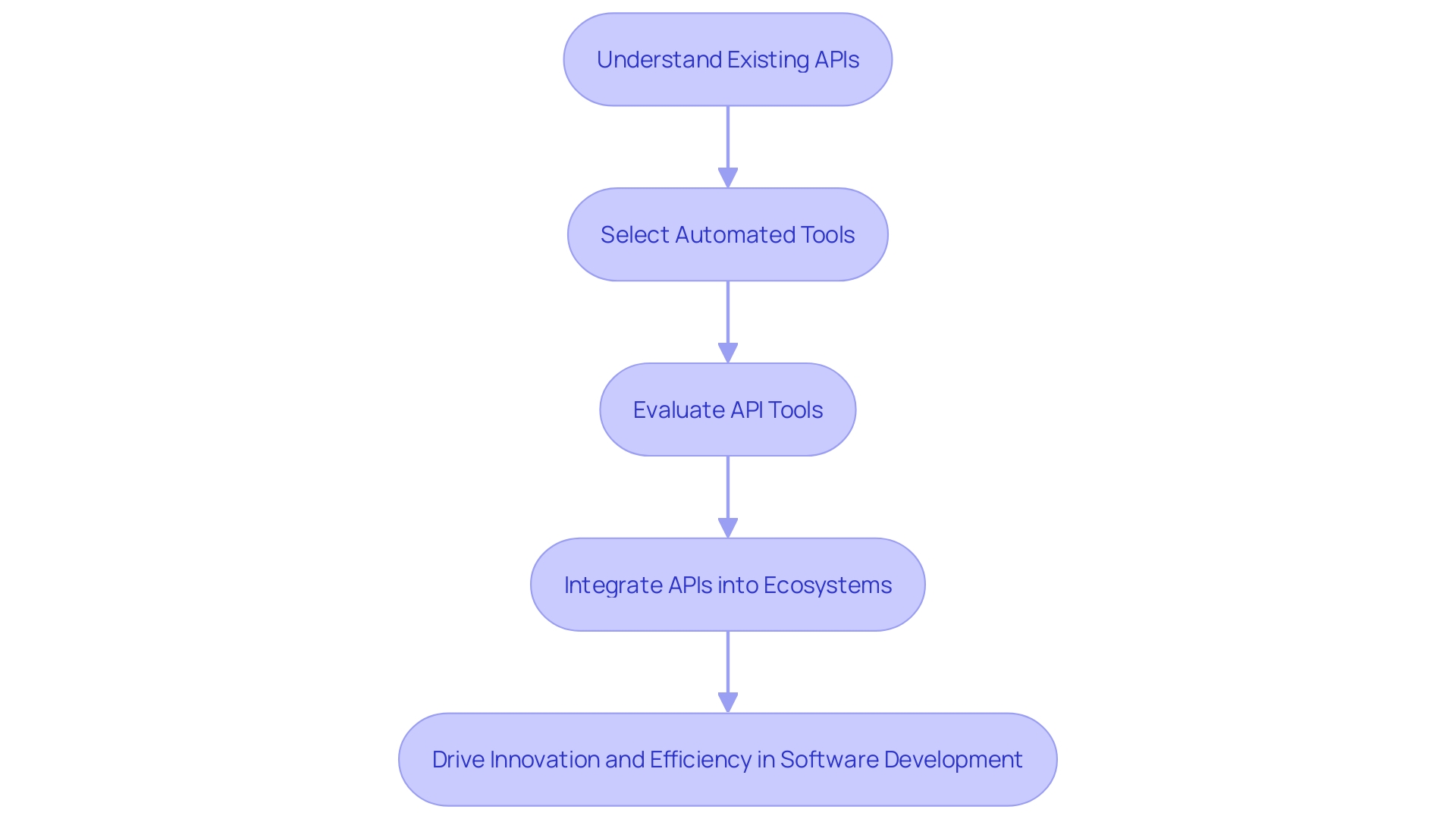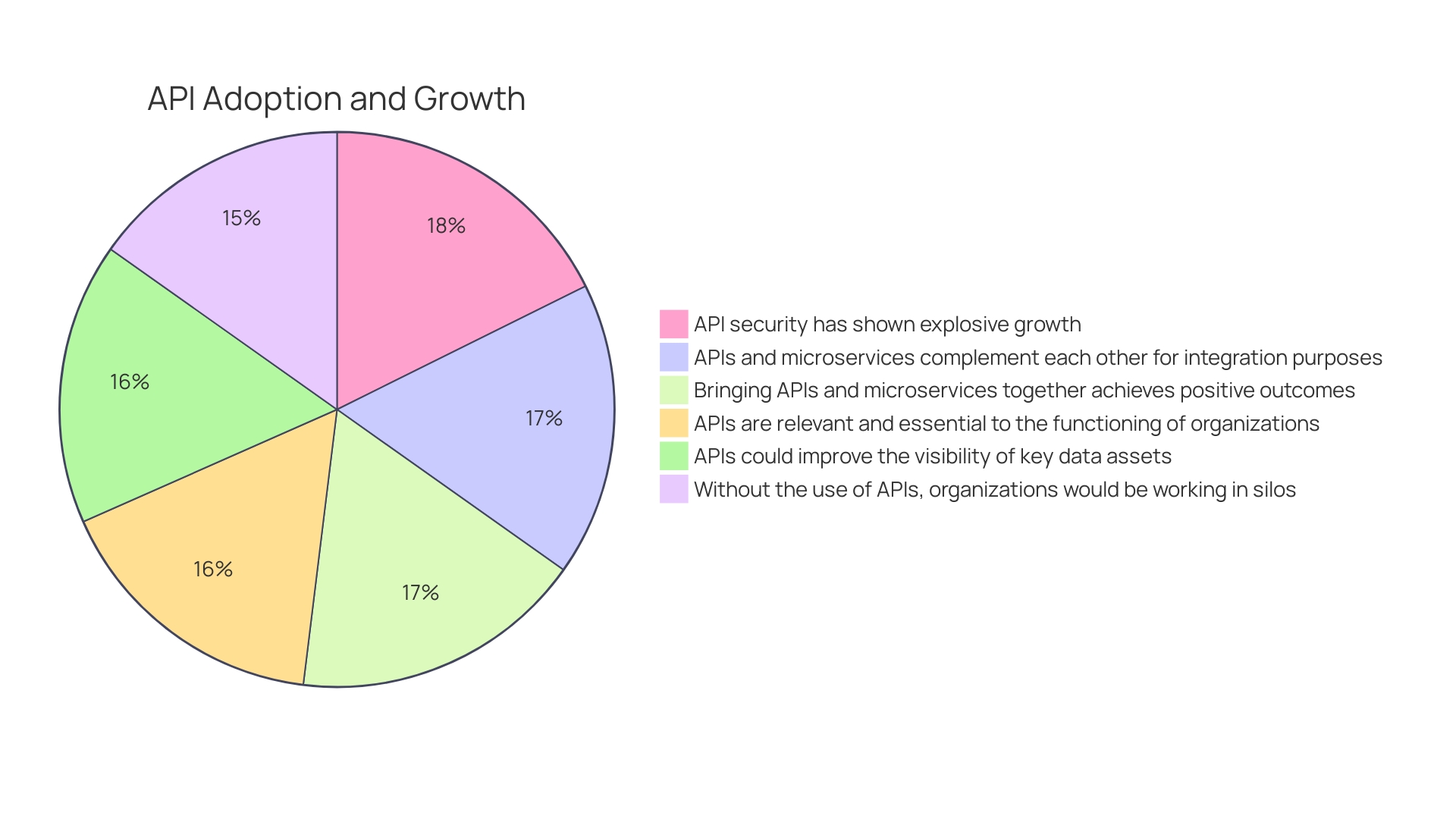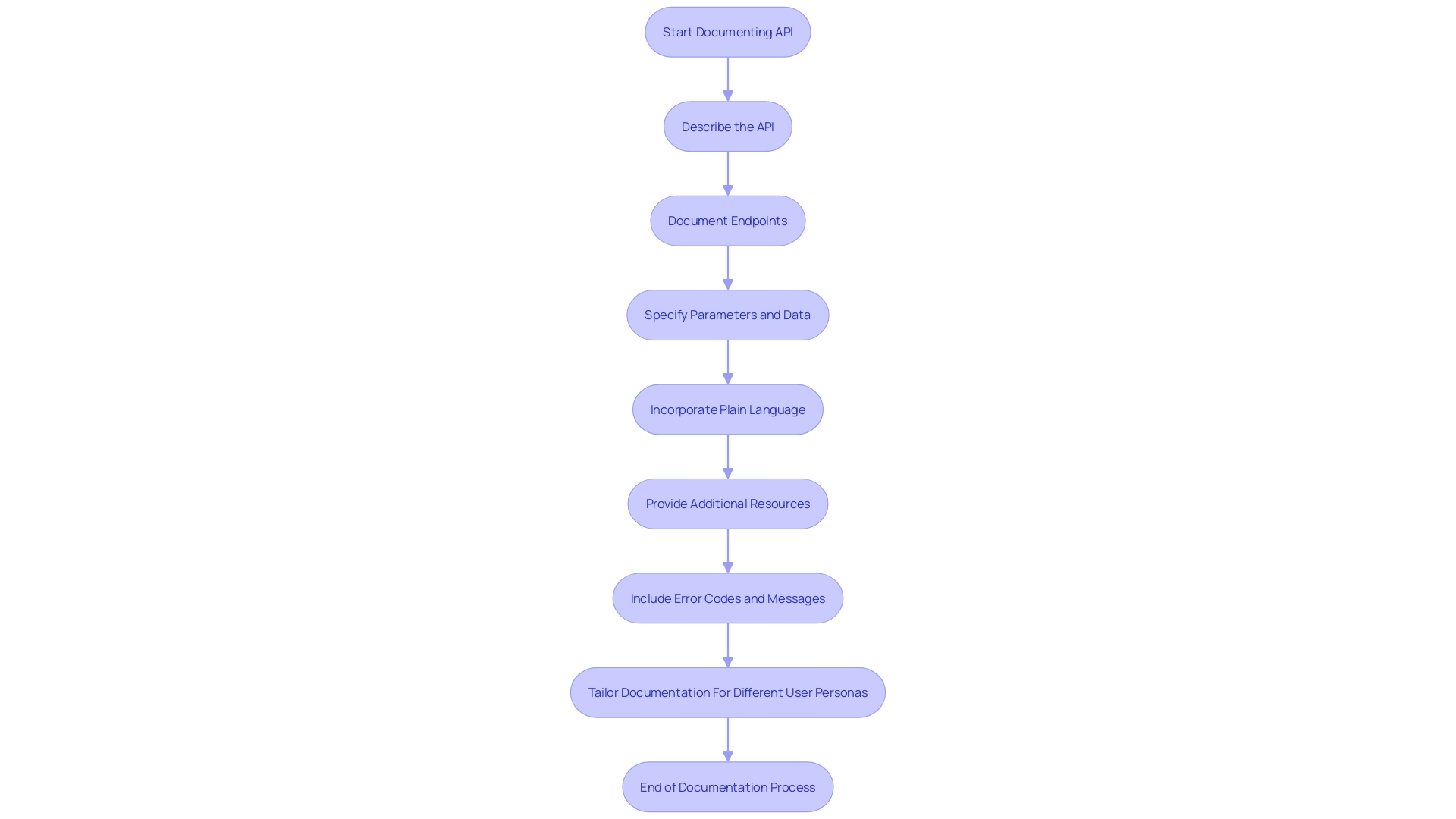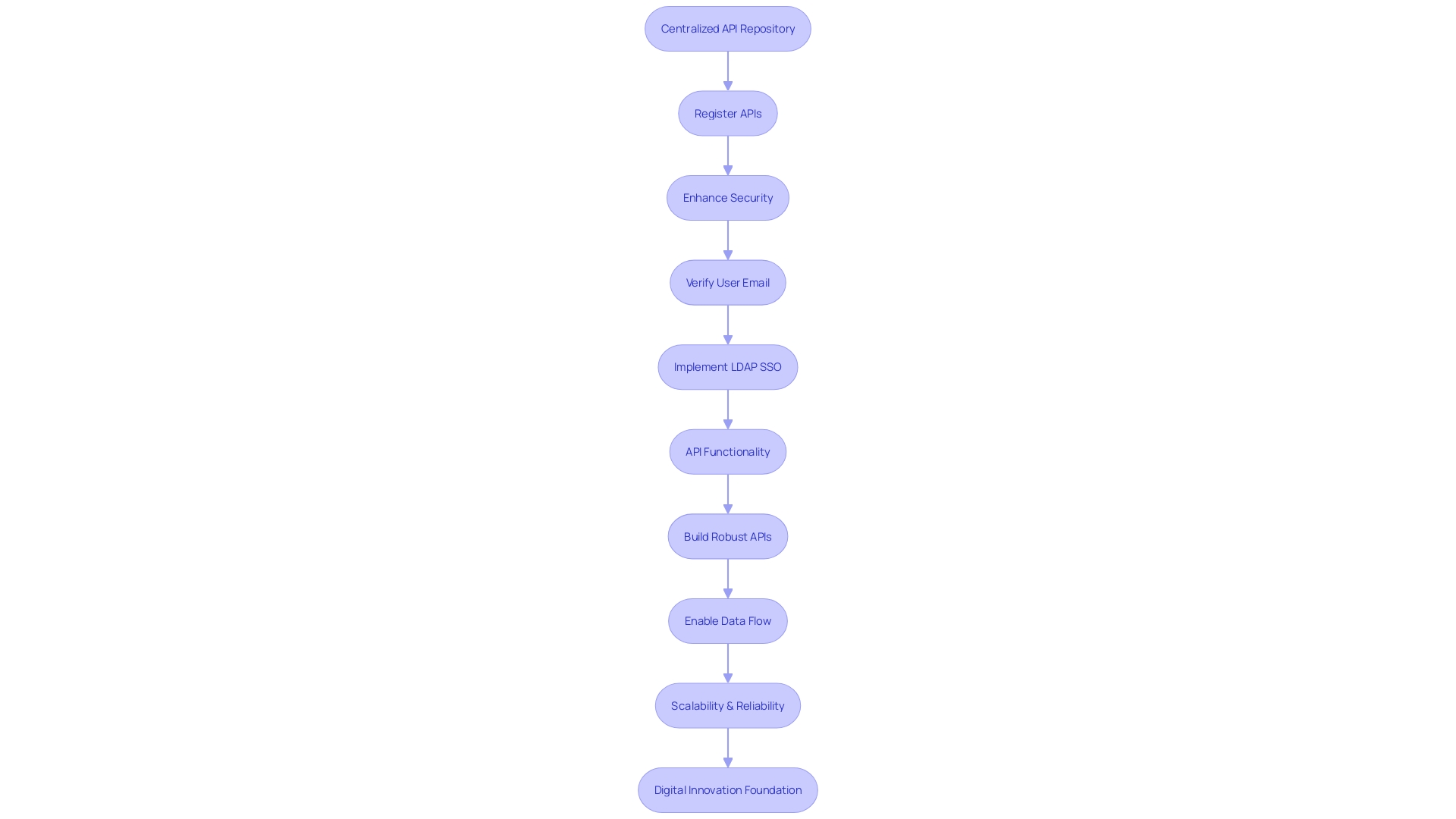Introduction
Maintaining a comprehensive API inventory is a critical aspect of effective API management for organizations. This inventory serves as a centralized record of all APIs that a company has developed or is utilizing, which is vital for informed governance, enhancing security, and managing operations. The significance of API inventory is highlighted by recent cybersecurity reports, with 78% of cybersecurity teams reporting API-related security incidents within a year.
Moreover, the growing reliance on APIs has been accompanied by a surge in API breaches due to inadequate security measures. To mitigate such risks, organizations must ensure that their API inventories are well-maintained and secure. In this article, we will explore the importance of API inventory, the prerequisites for building one, and the best practices for managing and securing APIs.
By following these guidelines, organizations can maximize the potential and operational efficiency of their API inventory, ultimately driving innovation, efficiency, and security in their digital ecosystems.
Why API Inventory is Important
Maintaining a comprehensive API inventory is a critical aspect of effective API management for organizations. This inventory serves as a centralized record of all APIs that a company has developed or is utilizing, which is vital for informed governance, enhancing security, and managing operations. For instance, consider the repercussion of the Trello data leak, which exposed the data of over 15 million users, including personal information not meant to be public.
This incident underscores the importance of having a robust API management strategy that includes keeping an accurate inventory to prevent potential breaches and protect sensitive data.
Furthermore, the use of APIs extends beyond mere functionality; it's about delivering business value and delighting customers. As demonstrated by the experience at California State University, APIs can streamline processes and facilitate efficient services, such as ensuring students meet course prerequisites. The university's adoption of APIs across various functions emphasizes the necessity of having a detailed API inventory to manage the intricate web of services and applications.
The significance of API inventory is also highlighted by the findings of recent cybersecurity reports. With 78% of cybersecurity teams reporting API-related security incidents within a year, and 81% recognizing API security as a higher priority than before, the necessity for improved API visibility is evident. Only 40% of organizations with a full inventory of APIs have clarity on which return sensitive data, indicating the need for better inventory practices.
Moreover, the growing reliance on APIs has been accompanied by a surge in API breaches due to inadequate security measures. Hackers increasingly exploit API vulnerabilities, leading to severe consequences for businesses and consumers. To mitigate such risks, organizations must ensure that their API inventories are well-maintained and secure.
In conclusion, the value of API inventory cannot be overstated. It's not just about cataloging APIs; it's about understanding the needs of the users and delivering solutions that cater to those needs effectively. As APIs continue to be integral to organizational operations, it's imperative to establish a comprehensive inventory system that supports security, governance, and efficient management.
Prerequisites for Building an API Inventory
The foundation of any robust API inventory begins long before the first line of code is written. Establishing an effective API inventory requires a clear understanding of the APIs that exist within a system or across multiple systems, along with their methods and data formats. Automated tools are increasingly preferred over manual API discovery methods, as they can quickly scan and identify APIs with greater efficiency.
This approach aligns with the practical needs of today's software development, where APIs are not only abundant but are the linchpins that enable different systems to interact seamlessly.
Choosing the right tools to build, manage, and monitor your APIs is crucial and should be based on your organization's specific needs, budget, and use cases. A comprehensive overview of 50 leading API tools, evaluating key criteria such as features, pricing, and support, can offer valuable guidance in this selection process. Whether the focus is on testing, documentation, design, or management, the tools you select will shape your API strategy and its execution.
Recent advancements in the tech industry highlight the evolving landscape of API integration. For instance, new tools have emerged that allow content to be ingested without the need to provision and maintain services, thanks to managed instances of vector databases. Such innovations underscore the importance of not only discovering and cataloging APIs but also integrating them into broader ecosystems to enhance user experiences.
In summary, embarking on the creation of an API inventory is a strategic process that involves a thorough understanding of your APIs' roles within the software architecture. This, coupled with the selection of appropriate tools and an awareness of the latest industry developments, lays a solid groundwork for a successful API inventory that can drive innovation and efficiency in software development.

Step 1: Identify APIs
Creating a comprehensive API inventory is a foundational step for any organization aiming to streamline its digital operations. By cataloging both internally developed APIs and third-party dependencies, you lay the groundwork for efficient communication and integration across various software components.
Chick-fil-A's experience illustrates this necessity vividly. Initially, their APIs functioned without explicit contracts, leading to an environment where developers were often unclear about API specifications such as data types and required fields. This lack of clarity necessitated time-consuming collaboration between teams which could have been avoided with standardized API documentation.
Similarly, Spotify's Backstage platform faced technical challenges, like a rigid data model and manual data ingestion that could result in outdated API inventories. These issues underline the importance of selecting the right tools for API inventory management—ones that accommodate organizational needs and adapt to the evolving API landscape.
To choose the best API tools, consider what your primary purpose is—testing, documentation, design, or management. Each tool offers different features, pricing models, and levels of support. For instance, GraphQL's ability to provide canonical definitions of interfaces helps prevent errors and promotes automatic SDK generation.
Nick Tune's insights on the complexity of software modeling, like the multiple interpretations of 'Accounts' in different departments, further emphasize the need for clear and consistent API documentation. This clarity ensures that all stakeholders have a shared understanding of the API's functionality.
In terms of security, the staggering figures from recent research showing that 78% of cybersecurity teams have faced an API-related security incident in the past year stress the urgency of thorough API inventories. With only 40% of organizations having visibility into which APIs return sensitive data, the priority for API security has understandably increased.
In conclusion, an accurate API inventory is not merely a list; it's a strategic asset that informs security protocols, enhances collaboration, and drives efficiency in digital ecosystems. As you embark on this task, remember that the tools and approaches you select should reflect your organization's unique requirements and objectives.

Step 2: Document API Details
Documenting an API goes beyond merely listing its functionalities; it's akin to crafting a comprehensive guide that empowers developers to effectively engage with your tool. This process begins with a clear description of what the API accomplishes, followed by the specifics of each endpoint, the parameters it accepts, and the data it returns. A well-documented API functions like a detailed user manual, similar to the one you might find with a new laptop, guiding users through operation and features.
It's essential to articulate this information in plain language, accessible even to novice developers, potentially linking to additional resources for complex concepts. Error codes and messages, too, are integral to the documentation—they are direct communication lines with the API users, offering immediate feedback and requiring regular updates to remain relevant. By considering various user personas, documentation can be tailored to meet the diverse needs of its audience, ensuring a seamless onboarding experience that quickly translates the API's benefits into practical applications.

Step 3: Categorize APIs
When managing an API inventory, it's essential to organize APIs effectively. Imagine trying to find a specific book in a vast library without any cataloging system – it would be a daunting task. Similarly, APIs act as an integral bridge connecting various software applications, essential in today's digital ecosystem.
Grouping APIs by their functionality, business domain, or other relevant criteria not only simplifies navigation but also enhances understanding and management.
To illustrate the complexity involved, consider the domain of 'Accounts.' This area can be interpreted in numerous ways depending on the department, lifecycle, or geographical perspective. For example, Sales might view an account as a customer profile with potential revenue, while Finance sees it as a billing entity.
This variability necessitates a nuanced approach to categorizing APIs to ensure clarity and utility for different stakeholders.
Furthermore, the rise of API breaches due to inadequate security measures underscores the importance of a well-organized API inventory. With 78% of cybersecurity teams reporting API-related security incidents in the past year, the need for clear and secure API documentation is evident. By categorizing APIs, organizations can better monitor and secure them, as well as facilitate efficient and consistent API development practices.
Step 4: Register APIs in Your API Center
Creating a centralized repository for API management is a critical step in the lifecycle of API development. This repository functions as a single source of truth for all APIs, offering a streamlined platform that enhances both security and functionality. For instance, in a user registration workflow, security is paramount, requiring careful consideration of how to safeguard the system from invalid states.
By utilizing endpoints that verify user email addresses via secret, non-guessable parameters, we establish a secure mechanism to confirm legitimate users.
Similarly, in enterprise systems where staff turnover is common and the demand for resource management grows, an API gateway that supports LDAP Single Sign-On becomes indispensable. This gateway provides a unified entry point for both internal and external services, simplifying access for developers while bolstering system security with monitoring and traffic control features.
As we consider the broader scope of API management, it's clear that the role of APIs extends far beyond basic functionality. They are the backbone of modern software development, allowing for seamless communication between different software programs. Google refers to APIs as the 'crown jewels' of software development, highlighting their ability to foster collaboration and innovation.
With the rise of big data and emerging technologies, APIs have become more crucial than ever, enabling developers to create powerful, interconnected systems.
The meticulous crafting of these APIs is not just about enabling data flow; it's about ensuring that the flow is consistent, secure, and scalable. By focusing on building robust APIs, we empower applications to be more agile and ready to meet the challenges of a data-driven world. This approach aligns with the objectives of an organization, prioritizing customer satisfaction and addressing data risk vulnerabilities from the outset, in line with standards such as ISO/IEC 27005.
In summary, registering APIs in a centralized management platform is more than just an inventory exercise; it's about creating a secure, accessible, and scalable foundation for digital innovation, essential for any enterprise aiming to maintain a competitive edge in today's fast-paced technological environment.

Step 5: Add API Versions and Definitions
Understanding the evolution and management of APIs is crucial for ensuring compatibility and clarity in the complex world of software development. Manually-written documentation has its drawbacks, often becoming outdated as the API evolves. This is where the concept of 'versioning' becomes indispensable.
Versioning allows developers and users to track changes and maintain stability across different versions of an API. With the increasing importance of APIs as the building blocks of modern software, highlighted by industry giants like Google, the proper management of API versions and definitions cannot be overstated.
For instance, semantic versioning helps manage the product lifecycle by providing a standardized way to release and upgrade API versions. This systematic approach ensures that software components interacting with an API can do so without disruptions, even as the API grows to meet new business needs or regulatory changes. The significance of this practice is further echoed in the API Design Patterns book, which dedicates an entire chapter to the subject.
Moreover, clear API definitions play a pivotal role in avoiding confusion. Nick Tune's anecdote about the multiple meanings of 'Flight' at Lufthansa illustrates the potential chaos when terms are not well-defined. The same applies to API documentation.
It acts as a user manual, guiding developers through the complexities of the API, similar to how a manual explains the functions of a laptop. Therefore, a comprehensive documentation that includes well-structured versions and definitions is not just a helpful tool, it's a necessity for any API that aims to be effectively utilized and understood by its users.
Companies like SmartBear demonstrate the value of a well-maintained API inventory by actively engaging with a peer-to-peer community, promoting ethical practices, and fostering innovation in the tech-driven world. In line with this community-driven approach, developers must take up the mantle and ensure their APIs' documentation is as evolving and dynamic as the APIs themselves. This ensures not just compatibility and understanding, but also fosters innovation and collaborative improvements in agency systems.

Step 6: Assign Custom Metadata
Custom metadata in APIs serves as a powerful tool to enhance the management and categorization of API inventories, tailoring them to an organization's unique requirements. By employing custom tags, labels, and descriptions, teams can create a more organized and searchable API library. This is exemplified in Amazon Kendra's enterprise search service, which leverages metadata for improved filtering and search results, allowing users to locate documents by specific cities or authors.
Moreover, in complex domains such as insurance, where document types and custom entities abound, custom metadata can significantly streamline the processing of claims by providing tailored content enrichment. Similarly, integrating services like Clerk and Stripe demonstrates the practical application of custom metadata in managing user session data, leading to more personalized and secure user experiences.
The necessity for such measures is underscored by the alarming rise in API breaches, which pose risks of exposing sensitive data. By ensuring precise and consistent metadata, organizations can not only protect against unauthorized access but also uphold the integrity of their data, as highlighted in the API standard philosophy.
Supporting this approach, recent statistics reveal a consensus on the critical role of APIs, with a vast majority of organizations recognizing their fundamental importance. The integration of APIs and microservices is seen as a catalyst for improved performance, customer satisfaction, and productivity.
In essence, assigning custom metadata is not just an organizational preference but a strategic imperative in today's digital landscape, where clarity and security are paramount.
Step 7: Manage and Update Your API Inventory
Cultivating an API inventory is a dynamic endeavor that extends well beyond its initial creation. It's essential to engage in continual refinement and updating to ensure your API inventory remains current and effective. Regularly scheduled maintenance and version control are critical, as is verifying the accuracy of the information on hand.
By adopting these best practices, you position your API inventory to serve as a reliable foundation for your digital infrastructure.
Maintenance and Version Control:
- Emphasize the importance of regular performance and stress testing to preempt API downtime.
- Utilize distributed tracing and root cause analysis to foster a thorough understanding of an API's journey and to pinpoint the origins of any issues.
Ensuring Information Accuracy:
- Update your API inventory with the frequency that mirrors your APIs' evolution and the platforms they support.
- Reflect on case studies, such as CSU's use of APIs in diverse applications, to appreciate the need for precise and current API documentation.
Leveraging Data and Metrics:
- Draw insights from usage metrics, like those from CSU's API/QA Engineer 101 workshop, which showed substantial post-workshop increases in productivity and collaboration.
- Understand that consistent updating is necessary as the same collections are frequently used and leveraged.
Staying Informed with Industry Trends:
- Stay abreast of how APIs have become central to the digital ecosystem, recognizing their evolution from developer tools to critical business assets in the 'API Economy.'
API Monitoring Best Practices:
- Monitor your APIs effectively and efficiently to maintain robust, resilient, consistent, and reliable systems.
- Implement proactive approaches, as outlined in 'API Management: How to Tackle Anomalies in RESTful APIs,' to manage incidents before they escalate.
By integrating these practices into your workflow, you can ensure that your API inventory remains a powerful tool for connecting systems and facilitating seamless digital interactions. This proactive approach not only enhances the performance of your APIs but also supports the growing API economy, thus contributing to higher customer satisfaction and improved productivity.
Step 8: Monitor and Secure Your APIs
The landscape of digital business is continually transformed by Application Programming Interfaces (APIs), which are essential for exchanging data and connecting systems. With their ability to enable businesses to access data, functionality, and services from other entities, APIs have become core to the booming API economy. This surge is driven by the ease of access to application data, which in turn fosters innovation, digital transformation, and seamless integration across platforms.
Monitoring and securing these APIs, therefore, becomes a paramount concern. With the API economy's impact spanning various industries—from healthcare, where APIs integrate electronic health records, to retail, where they personalize shopping experiences—the security and reliability of APIs directly influence the effectiveness of digital connectivity and integration.
As the digital economy pivots on APIs, the stakes for securing them are at an all-time high. The integration of APIs in cloud computing and agile development practices, accelerated by the pandemic's push for digital services, has seen a rapid expansion of API usage. The adoption of artificial intelligence (AI) has even streamlined the once time-consuming process of API creation, but this efficiency comes with increased risks.
Recent cybersecurity reports highlight the urgency of API security, revealing that a significant 78% of cybersecurity teams have encountered API-related security incidents within a year. Moreover, while 72% of organizations maintain a full inventory of their APIs, only 40% have visibility into those that handle sensitive data. As a consequence, API security has become more prioritized than ever before.
In the face of sophisticated attacks targeting API vulnerabilities—such as code injections and response manipulations—it is crucial for businesses to adopt and document corporate API posture standards and policies. These should address regulatory requirements like GDPR and CCPA, and incorporate best practices for API architecture, including authentication and rate-limiting measures.
To tackle API security challenges effectively, organizations must ensure comprehensive visibility and control over all APIs, which includes addressing potential blind spots like zombie, shadow, and rogue APIs. Adhering to best practices for development and avoiding common coding issues, as identified by OWASP, is also vital in maintaining a robust defense against the evolving threat landscape.
Common Challenges in Building an API Inventory
Creating an effective API inventory is akin to understanding the full menu of services a restaurant offers. Just as a chef needs to know every dish being served, developers must be aware of all the APIs at play within a system. It's about recognizing the 'kitchen' where data is prepared and the 'dining area' where it's consumed.
However, inventorying APIs isn't always straightforward. Unofficial 'Shadow APIs' can exist, much like a secret menu item, undocumented but influential. To facilitate seamless integration and enhance user experiences, these APIs require careful scrutiny and management.
The cornerstone of modern software, APIs are more vital than ever, enabling collaborations that lead to innovation. They're the translators between disparate applications, allowing for complex functionalities. When building API inventories, remember the importance of focusing on user 'needs' over 'wants,' a lesson highlighted by industry leaders.
Different perspectives, from sales to development, can significantly impact the interpretation of API domains, such as 'Accounts.'
Addressing these challenges involves distributed tracing and root cause analysis to ensure a comprehensive understanding of the API lifecycle. With the landscape of APIs rapidly evolving, it's crucial to adopt tools that align with your organization's specific needs, whether for budget constraints, features, or support. By mastering the craft of API development, you can ensure your systems are not only interconnected but also function with peak efficiency and scalability.
Best Practices for API Inventory Management
To maximize the potential and operational efficiency of your API inventory, it is imperative to adopt best practices that have been proven to enhance management and maintenance. Regular API testing is a critical component in this process, involving thorough inspections and evaluations to ensure APIs function as intended. The frequency of these testing cycles can be tailored to meet the specific needs of your environment, addressing stability and security concerns effectively.
Proper incident management is crucial to minimize both the cost and impact of potential API downtime. A proactive stance, characterized by consistent performance and stress testing, alongside adherence to established API design and development practices, is essential.
For instance, TotalEnergies Digital Factory (TDF) showcases the significance of a proactive approach. With its mission to bolster digital transformation, TDF has developed over 80 digital solutions, with APIs playing a pivotal role in the modernization of legacy systems. Their commitment to API excellence is further highlighted by the unanimous agreement among their developers on the benefits of tools like Postman for seamless collaboration.
Moreover, the importance of distributed tracing and root cause analysis cannot be overstated. These processes enable the correlation of data across different sources, providing a comprehensive view of an API request or response journey. This information is integral for identifying and addressing underlying issues that can affect API performance.
Furthermore, adhering to corporate API posture standards, which include defining what 'good' means for an organization and establishing relevant best practices and policies, is vital for regulatory compliance and operational effectiveness.
Statistics emphasize the growing relevance of APIs, with a Vanson Bourne study revealing that 93% of organizations consider APIs crucial to their operations, and 97% recognize the synergy between APIs and microservices. The adoption of these practices not only enhances data visibility but also leads to increased customer satisfaction, productivity gains, and time savings.
In summary, through vigilant testing, meticulous design, and development adherence, proactive incident management, and the establishment of best practices and standards, organizations can ensure their API inventory remains robust, secure, and efficient in today's digital landscape.
Conclusion
Maintaining a comprehensive and secure API inventory is crucial for effective API management. It enables informed governance, enhances security, and manages operations. Recent cybersecurity reports highlight the significance of API inventory, with a high percentage of cybersecurity teams reporting API-related security incidents.
Building an API inventory requires understanding existing APIs and using automated tools for efficient discovery. Choosing the right tools based on specific needs is essential. Integrating APIs into broader ecosystems enhances user experiences.
The process involves identifying APIs, standardizing documentation, categorizing APIs, and registering them in a centralized management platform. Understanding the evolution of APIs, versioning, clear definitions, and custom metadata are crucial. Managing and updating the API inventory involves regular maintenance, ensuring accuracy, leveraging data and metrics, staying informed with industry trends, and implementing effective monitoring practices.
Monitoring and securing APIs are paramount, given their role in the digital ecosystem. Overcoming challenges like unofficial APIs and different interpretations requires distributed tracing, root cause analysis, and selecting suitable tools. Adopting best practices for API inventory management, including regular testing, proactive incident management, and adhering to standards, enhances operational efficiency.
In conclusion, maintaining a comprehensive and secure API inventory is vital. By following best practices and leveraging the right tools, organizations can maximize the potential and operational efficiency of their API inventory, driving innovation, efficiency, and security in their digital ecosystems.
Start optimizing your API inventory today and unlock the full potential of your digital ecosystem!
Frequently Asked Questions
What is an API inventory?
An API inventory is a centralized record of all the APIs that a company has developed or is utilizing. It is critical for governance, enhancing security, and managing operations effectively.
Why is maintaining an API inventory important?
Maintaining an API inventory is important because it helps prevent potential security breaches, protects sensitive data, ensures informed governance, and facilitates efficient service delivery.
What was the Trello data leak, and how does it relate to API management?
The Trello data leak was an incident that exposed the data of over 15 million users due to API vulnerabilities. It highlights the need for a robust API management strategy, which includes maintaining an accurate API inventory to enhance security.
How do APIs benefit organizations beyond functionality?
APIs deliver business value and improve customer experiences by streamlining processes, such as ensuring students meet course prerequisites at California State University, making them integral to modern organizational operations.
What percentage of cybersecurity teams have reported API-related security incidents?
According to recent cybersecurity reports, 78% of cybersecurity teams have reported API-related security incidents within a year.
What is the significance of API visibility?
API visibility is significant because it allows organizations to identify which APIs return sensitive data, which is crucial for improving security practices. Only 40% of organizations with a full inventory of APIs have this clarity.
What are the prerequisites for building an API inventory?
Building an API inventory requires understanding the existing APIs within a system, including their methods and data formats. Automated tools are preferred for efficient API discovery.
Why is it important to document API details?
Documenting API details is important as it acts like a user manual, guiding developers through the operation and features of the API, and is essential to ensure effective engagement with the tool.
What is the purpose of categorizing APIs in an inventory?
Categorizing APIs in an inventory simplifies navigation, enhances understanding, and facilitates better monitoring and security by organizing them by functionality, business domain, or other relevant criteria.
What is the role of an API Center?
An API Center serves as a centralized repository for API management, providing a single source of truth for all APIs to enhance security and functionality.
How does versioning help in API management?
Versioning allows developers and users to track changes and maintain compatibility across different API versions, ensuring stable interactions and clarity in software development.
What is the benefit of assigning custom metadata to APIs?
Assigning custom metadata to APIs allows for a more organized and searchable API library, tailored to an organization's unique requirements, and enhances management and categorization.
Why is it necessary to manage and update an API inventory?
Managing and updating an API inventory is necessary to keep it current and effective, ensuring reliability and reflecting API evolution and the platforms they support.
What are the best practices for API inventory management?
Best practices for API inventory management include regular API testing, proper incident management, distributed tracing, root cause analysis, and adherence to corporate API standards for regulatory compliance and operational effectiveness.
How can organizations monitor and secure their APIs effectively?
Organizations can monitor and secure their APIs by adopting corporate API posture standards and policies that address regulatory requirements, best practices for API architecture, and comprehensive visibility and control over all APIs.
What are common challenges in building an API inventory?
Common challenges in building an API inventory include managing unofficial 'Shadow APIs', ensuring clarity across different departments' interpretations of API domains, and selecting the right tools that align with an organization's needs.




